Education and Outreach
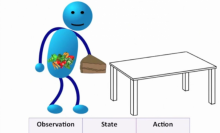
|
Computer science for middle schoolers
Rus et al. designed computer science curriculum designed to teach middle school students about computer science fundamentals. The curriculum is based on the NXT programming lanugage and teaches students about finite state machines. |
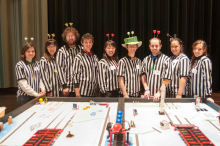
|
FIRST LEGO Leauge Kumar’s students mentored FIRST LEGO League (FLL) middle school robotics teams and served as volunteers and judges at the FLL Southeastern Pennsylvania Championship at the University of Pennsylvania. |
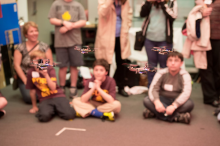
|
GRASP National Robotics Week Open House Kumar’s students participated in the 2013 GRASP National Robotics Week Open House. Over 260 K-12 students visited the Multi Robot Systems Lab and learned about micro UAVs and how to print quadrotors using the MakerBot |
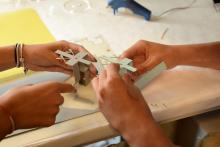
|
Harvard & the Pioneer charter school of science outreach Students and staff at the Harvard Microrobotics Lab applied the lessons they learned from building printable robots to creating an educational program for high school students. Four juniors and seniors from the Pioneer Charter School of Science attended a two-week program run by a team of Harvard researchers in which they learned principles of design, culminating in the construction of a robot from cardboard. The devices and robots built in this program were constructed using the same techniques developed and honed for the lab's work in building origami-inspired robots. In addition, we have mentored six undergraduate students from four schools (Harvard, MIT, University of Colorado Boulder and Bunker Hill Community College) who pursued Printable Robots projects. |
| Laboratory Tours Kumar’s students presented their reserach to middle school and high school students that visited the GRASP lab for tours and robotics demonstrations. From August 2012 to August 2013 Kumar’s students gave over 30 presentations. |
|
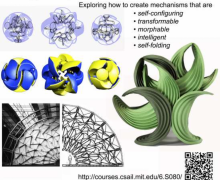
|
Mechanical Invention through Computation class In Spring 2013, Demaine and Rus cotaught a hands-on undergraduate class at MIT called 6.S080: Mechanical Invention through Computation, together with visiting artist Chuck Hoberman. The class explored the creation of mechanisms with a focus on the inventive process itself, with topics including kinematic analysis and synthesis, self-actuated form-creation through origami and other means, design of transformable structures that change size and shape, with methods of physical interaction and automated control. The 27 students consisted of a healthy mix of designers, computer scientists, engineers, and mathematicians. They focused on semester-long group projects to develop interactive software applications, kinetic physical devices, and robots. The projects were exhibited publicly at CSAIL, with hundreds of people attending the opening event. |
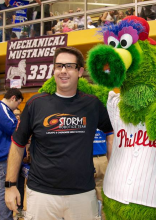
|
Research Experiences for Teachers (RET) Kumar received a NSF supplement under the Expeditions in Computing program to support a local high school technology teacher and robotics coach for a summer research experience. The teacher participated in research involving the transformation of a MakerBot into a circuit board printing device. |
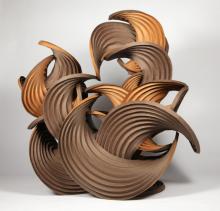
|
Sculpture The Demaine group at MIT build "self-folding" curved-crease sculpture to illustrate the powerful mathematics of computational origami design, and how material properties can be harnessed to produce desired foldings semi-automatically, all through the accessible medium of tangible art. Their sculpture has been exhibited at over 20 art galleries and museums in 2013, including two highschool galleries. In addition, the Demaines have given numerous talks about connections between art and mathematics, with specific examples related to folding and robotics. |
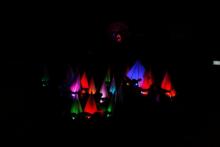
|
UP: The Umbrella Project In collaboration with Pilobolus, the world famous modern dance troupe, the Distributed Robotics Lab created UP, a large-scale live performance piece that arms untrained participants from all walks of life with umbrellas fabricated with multi-colored LED lights. Each participant spontaneously interacts with the group and, by manipulating the color of his or her own umbrella, creates an ever changing landscape of hues as they move through space to bring art to life. UP premiered at the PopTech Conference in Camden, Maine in October 2012 and was performed again at MIT in May 2013. Each time over three-hundred participants lit up the sky on a rainy night. The UP umbrellas are equipped with custom-designed, user-controllable red, green, and blue LEDs that can be independently switched on and off with the push of a button. The LEDs are located in the umbrella’s handle and project color upward to illuminate the umbrella’s translucent dome. We captured this action from above using a suspended camera that projected its field of view onto a large screen so that all performers could see a global perspective of the shapes being formed. Each participant becomes a live pixel that autonomously controls her own color based on what she sees in both her immediate neighborhood and what she sees happening at a global perspective on the projector screen.
|
